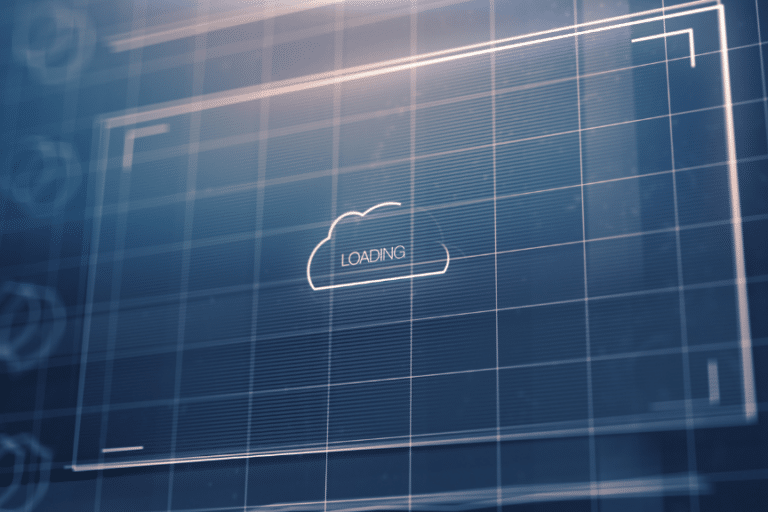AWS X-Ray stands as a pivotal service within the AWS ecosystem, offering developers deep insights into their application’s performance and operational issues. It enables a comprehensive analysis of both distributed applications and microservices, facilitating a seamless debugging process across various AWS services. But what exactly is AWS X-Ray, and how does it redefine the approach to application monitoring and debugging?
Table of Contents
What is AWS X-Ray?
AWS X-Ray is a sophisticated tool designed to aid developers in understanding how their applications operate within the AWS environment. It provides a detailed view of requests as they travel through your application, allowing for the identification of performance bottlenecks and pinpointing the root cause of issues. By offering a service map, X-Ray visually depicts the interactions between services within an application, providing invaluable insights into the application’s architecture and behavior.

How Does AWS X-Ray Work?
The functionality of AWS X-Ray can be distilled into a simple workflow that ensures comprehensive trace data collection and analysis. It starts with collecting traces from each component of your application, aggregating this data into what AWS refers to as “traces.” These traces then form a service map, offering a visual representation of the application’s architecture. This service map is crucial for analyzing application issues, as it provides detailed latency data, HTTP status, and other metadata for each service.
The Features and Benefits of AWS X-Ray
Simplified Setup
Getting started with AWS X-Ray is remarkably straightforward. Whether your application is running on Amazon EC2, ECS, Lambda, or Elastic Beanstalk, integrating with X-Ray involves minimal configuration. This ease of setup ensures that developers can quickly start gaining insights into their applications without a steep learning curve.
End-to-End Tracing
One of the standout features of AWS X-Ray is its ability to offer an end-to-end view of requests made to your application. This “application-driven view” is instrumental in aggregating data from various services into a cohesive trace, thereby simplifying the debugging process.
Service Map Generation
At the heart of AWS X-Ray’s functionality is its service map feature. This automatically generated map provides a visual overview of your application’s architecture, highlighting the connections and interactions between different services and resources. It serves as a critical tool for identifying errors and performance issues within your application.
Practical Application and Analysis
Analyzing Application Performance
AWS X-Ray shines when it comes to analyzing and improving your application’s performance. The service map and traces allow developers to drill down into specific services and paths, identifying where delays occur and optimizing them for better performance.
Debugging with Precision
Debugging applications becomes a breeze with AWS X-Ray. By tracing requests through your application, X-Ray enables you to pinpoint the exact location of errors and issues. This precise level of debugging helps in quickly resolving problems, enhancing the application’s reliability.
AWS X-Ray Core Concepts
Traces and Segments
At the core of AWS X-Ray’s functionality are traces and segments. A trace represents a single request made to your application, capturing all the actions and services that process the request. Segments, on the other hand, are pieces of the trace, representing individual operations or tasks performed by services within your application. For example, if a user uploads an image, the processing of that image by your application could be one segment of the trace of the user’s request.
Service Maps
Service maps visually represent the components of your application and how they interact with each other. By analyzing a service map, you can quickly identify which parts of your application are experiencing high latencies or errors. Think of it as a map of a city, where each service is a building, and the paths between them are the roads. The map shows you traffic flow and blockages, helping you navigate your application’s architecture more effectively.
AWS X-Ray Workflow
Data Collection
The first step in the AWS X-Ray workflow is data collection. As requests travel through your application, X-Ray collects data on these requests, creating traces. This data collection is automatic once you’ve integrated the X-Ray SDK with your application.
Data Processing
Once data is collected, AWS X-Ray processes it, organizing the information into a coherent structure that you can analyze. This processing stage is where traces are assembled, and service maps are generated, providing a comprehensive view of your application’s performance and interactions.
Data Analysis
The final stage is data analysis, where you, the developer, step in. Using the AWS X-Ray console, you can examine the traces and service maps, identify issues, and gain insights into how to improve your application. Whether it’s a slow database query or a faulty external API call, X-Ray helps you find and fix problems fast.
Integrating AWS X-Ray with Other AWS Services
AWS X-Ray seamlessly integrates with various AWS services, enhancing its tracing capabilities. When you use AWS Lambda, Amazon EC2, or Amazon ECS, integrating X-Ray allows you to trace requests as they move through these services, providing a unified view of your application’s performance across the AWS ecosystem.
AWS X-Ray Console
Navigating the Console
The AWS X-Ray console is your dashboard for monitoring and analyzing your application’s performance. It’s where you’ll spend your time exploring traces, examining service maps, and uncovering insights about your application. The console’s intuitive design makes it easy to navigate between different views, whether you’re looking at a high-level overview or diving deep into a specific trace.
Analyzing Traces
The Traces view in the console lists individual traces recorded by X-Ray. Each trace provides detailed information about a single request, including timings, statuses, and errors. This view is essential for debugging specific issues, as it allows you to drill down to the exact point where a problem occurred.
Understanding Service Maps
The Service Maps view gives you a visual representation of your application’s architecture, showing how different services and components interact. By examining a service map, you can identify bottlenecks, spot errors, and understand the flow of requests through your application. It’s a powerful tool for getting a bird’s-eye view of your application’s performance.
Getting Started with AWS X-Ray
Getting started with AWS X-Ray is a straightforward process that can yield significant insights into your application’s performance and operational issues. By following the steps outlined above and utilizing the resources provided by AWS, you can quickly integrate X-Ray into your application and begin exploring the data it provides. Whether you’re troubleshooting a specific issue or proactively monitoring your application, AWS X-Ray offers the tools and insights needed to support your goals.
Setting the Stage for Application Insight
Embarking on your journey with AWS X-Ray marks the beginning of deeper insights into your application’s behavior and performance. The integration process is designed to be straightforward, allowing you to quickly gain the benefits of X-Ray’s monitoring and debugging capabilities. Whether you are working on a new project or looking to enhance an existing application, AWS X-Ray provides the tools necessary to understand your application’s inner workings.
Integrating X-Ray into Your Application
The initial step to leveraging AWS X-Ray’s full potential is integrating the X-Ray SDK with your application. This integration is crucial as it enables X-Ray to collect data on incoming and outbound requests, along with internal events and interactions within your application. The SDK is available for several programming languages, ensuring that you can implement X-Ray regardless of your application’s tech stack.
The Role of the X-Ray Daemon
For applications not hosted on AWS Elastic Beanstalk or Lambda, installing the X-Ray daemon is an essential part of the setup process. The daemon listens for UDP traffic on your instances and relays the segment documents generated by the SDK to the X-Ray service. This step is key to ensuring that your application’s data is correctly transmitted and processed by X-Ray.
AWS X-Ray Pricing
AWS X-Ray adopts a flexible pay-as-you-go pricing model that allows you to pay only for what you use, without any upfront fees or commitments. This model is designed to cater to applications of all sizes, from small-scale projects to large, distributed applications.
Traces Recorded, Retrieved, and Scanned
AWS X-Ray charges are primarily based on three activities: traces recorded, traces retrieved, and traces scanned. Recording a trace means capturing data about a request made to your application, while retrieving a trace involves accessing the full data of a recorded trace. Scanning traces refers to querying trace data without retrieving the full details. The cost calculations for these activities depend on the volume of traces your application generates and interacts with.
Free Tier and Beyond
AWS X-Ray’s generous free tier includes the first 100,000 traces recorded and the first 1,000,000 traces retrieved or scanned each month at no cost. This offering is particularly beneficial for small applications or those in the development phase, as it significantly reduces or even eliminates costs associated with initial monitoring and debugging efforts.
Example Scenario
Consider an application that receives 2,000 incoming requests per hour, with a 10% sampling rate for traces. This scenario would result in 148,800 traces recorded per month. After accounting for the free tier, you’d have 48,800 billable traces, costing you a mere $0.24 for traces recorded.
If you also make 100 queries per day, scanning the last hour of data (200 traces per query) and retrieving full trace data for 50 traces per query, you’d end up with 775,000 traces scanned or retrieved. However, due to the free tier, there would be no additional charges for traces retrieved or scanned in this scenario.
X-Ray Insights and Application Signals
Enhancing Monitoring with Insights
X-Ray Insights is an advanced feature that processes your traces to detect anomalies and provide proactive incident reports. Assuming the same 148,800 traces are processed by X-Ray Insights, you would incur an additional charge of $0.15, bringing your total monthly cost for using AWS X-Ray to $0.39.
Monitoring with Application Signals
Application Signals, currently in preview, offers comprehensive monitoring for inbound and outbound requests. For a high-traffic application, the volume of Application Signals could reach billions per month, leading to charges based on the total number of signals. The detailed pricing structure ensures you only pay for the scale of monitoring your application requires.
Total Monthly Costs
The total monthly cost for using AWS X-Ray, including traces and Application Signals, can vary significantly based on your application’s size and complexity. The pricing examples provided illustrate how AWS X-Ray remains cost-effective, offering detailed application insights and debugging capabilities at a fraction of the cost of traditional monitoring solutions.
AWS X-Ray’s pricing model is designed to scale with your application, ensuring that you have access to deep insights and debugging tools exactly when you need them, without worrying about prohibitive costs. Whether you’re running a small service or a complex distributed application, AWS X-Ray provides the flexibility and affordability to keep your application running smoothly.
AWS X-Ray API
Empowering Automation and Custom Integration
While the AWS X-Ray console offers a user-friendly interface for monitoring and analyzing your application’s performance, the AWS X-Ray API opens up a broader range of possibilities for automation and custom integration. This powerful API allows developers to programmatically access the rich dataset collected by X-Ray, enabling tailored analysis and deeper insights.
Key Features of the AWS X-Ray API
The AWS X-Ray API provides several endpoints that allow you to interact with your tracing data programmatically. These capabilities include creating and managing sampling rules, retrieving service maps, and accessing detailed trace data. By using the API, you can integrate X-Ray data into your own monitoring systems or dashboards, automate specific analysis tasks, and even build custom alerts based on X-Ray metrics.
Use Cases for the API
One of the primary use cases for the AWS X-Ray API is automation. For instance, you could automate the creation of sampling rules based on traffic patterns, ensuring that you always have relevant trace data without overwhelming your system with too much information. Additionally, the API could be used to integrate X-Ray data with third-party monitoring tools or to aggregate trace data for machine learning analysis to predict application behavior.
Using AWS X-Ray for Enhanced Insight
AWS X-Ray represents a powerful solution for developers looking to gain deeper insights into their applications. By providing detailed performance analysis, comprehensive tracing, and an intuitive service map, X-Ray empowers developers to optimize their applications and solve issues with unprecedented precision. Whether you’re debugging a complex distributed application or looking to enhance performance, AWS X-Ray offers the tools and insights needed to succeed in the AWS cloud.
As developers continue to explore and utilize AWS X-Ray, the service stands as a testament to AWS’s commitment to providing robust, developer-friendly tools that enhance application monitoring and debugging. By leveraging AWS X-Ray, developers can ensure their applications perform optimally, delivering a seamless experience to end-users.






